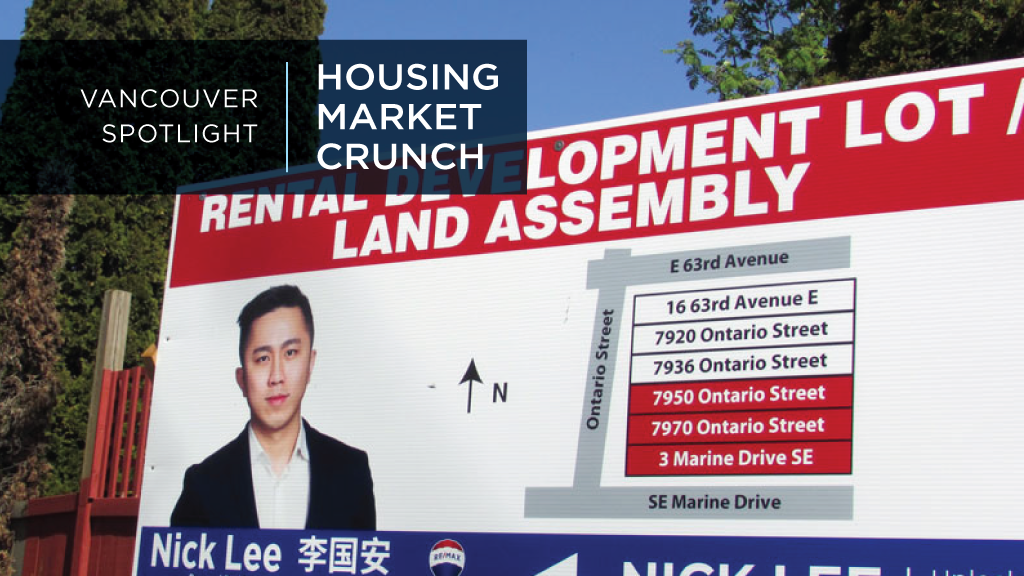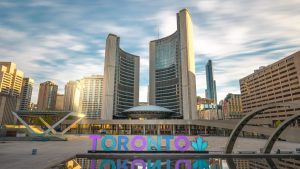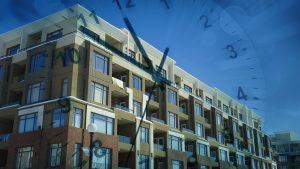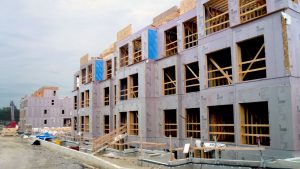Vancouver’s affordable housing deficit is mired in development issues, land shortages and a historical lack of government funding with no fast fix in sight despite governments heading into an election promising billions to help solve the problem.
According the province’s press information, since 2017, it has delivered or has underway 8,000 housing units in Vancouver (or approximately 1,000 a year). That number pales in comparison to needs.
The city’s 2022 report on housing needs identified approximately 86,000 existing households in need, and future housing demand from approximately 50,000 anticipated households over the next 10 years.
Into the mix have arrived one million immigrants to Canada in 2022 and 2023. Last year, 66,268 arrived in B.C. with half landing in Metro Vancouver.
CMHC’s figures do show a rise in Vancouver apartment buildings starts with 16,022 units in 2020, 19,447 in 2021, 19,288 in 2022, and 27,576 in 2023.
But, Vancouver’s problem is land. Governments are now scrambling on two fronts: looking for unused government land and densification on existing land while the private sector attempts to free up single family lots which make up 80 per cent of Vancouver’s residential land base, with MURBs on the remaining 20 per cent.
But, there is no quick fix. In March Vancouver council green lighted the rebuild of BC Housing’s Skeena Terrace (planning started in 2021) in seven phases to increase affordable housing from 600 tenants to 2,000 units. But only phase one is beginning in 2024.
B.C. launched its new BC Builds in early 2024 to connect non-profits, First Nations and private developers to zoned sites in communities and maintains it can expedite projects from concept to construction in 12 to 18 months “rather than the typical three to five years” normally seen. But, Vancouver operates under its own charter, not the province’s edict.
Multiplexes part of the solution
Unlocking single-family lots has become the issue with only two ways: land assembly to merge lots to rezone to MURBs and secondly, through the provincial and city’s most recent announcement allowing multiplexes on single-family lots, with the number depending on lot size.
Veteran realtor David Hutchinson said land assembly can, on average, take two years from when a realtor knocks on doors until there is a payout to property owners. Hutchinson has had cases drag on for five years and they are just as liable to fall apart.
“It is not a speedy solution,” he said.
Once property owners are paid off, there is still the task obtaining a building permit and constructing affordable housing in a labour tight market.
In some city areas, zoning prohibits larger MURBs and land assembly and construction costs simply outweigh sales potential.
“The developer wants to make a profit,” he said.
Currently, large MURB development is focused on main arterial routes and near transit stations. But, as such developments go up, remaining homeowners often up price demands.
“Prices have gone crazy,” he said of areas around Oakridge and the Cambie Corridor.
He added the city now wants a “non-market housing component” to most new developments which is another cost consideration to developers.
‘We are in a transition’
president Jeannine Martin said the average infrastructure cost, as determined by the CMHC, is now $107,000 per development unit. Higher densification also puts more pressure on amenities such as schools, parks and hospitals. The question now is how much can developers take on in development costs and keep housing affordable?
“That is the debate in the market,” she said.
The Jordan Bateman said there are two frustrations facing developers and contractors. There is continued red tape and the time period to get a permit.
“It can take more time to prepare a permit application because of the intricate rules then it can take to build a building,” he said.
expects the city and provincial attempts to better utilize single-family lots into multiplex development will provide some middle-income market relief. Vancouver is allowing eight units in a multiplex on a single-family lot with the unit amount tied to size.
“It will not take away from the larger developments,” he said, but it will provide increased density in neighbourhoods away from the arterial and transit station areas.
The real impact he sees is that there will be option to stratify these single-family lots with multiplexes and provide an ownership option. Clarke said he is aware of 70 applications currently before the city.
Ron Rapp, CEO of the said he has heard there are 100 to 150 applications for multiplexes ready to go before the city as owners of single-family lots embrace the plan.
Rapp agrees multiplexes will address the “missing middle” for homeownership and “there is a shortage of product geared to the income level of $80,000 to $150,000.”
These are individuals who have steady jobs but their leverage is limited in terms of home ownership because of Vancouver’s high land values.
Vancouver’s housing crisis is multi-faceted, he said, needing all levels of government to work together but also to encouraging new construction methods such as prefabrication which can expedite construction and reduce costs.
“We have to make big changes,” he said. “We are in a transition.”










Recent Comments
comments for this post are closed